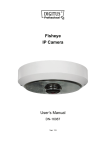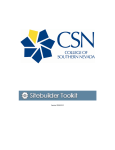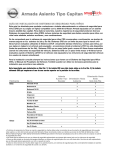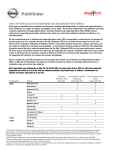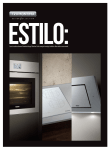Download Sunshine Kids Juvenile Products Car Seat Radian 65 User's Manual
Transcript
Warnings 4 Seating Position Information 5 Child Restraint Safety Information 6 Seat Belt Information 8 Carrying Restraint 9 Unfolding and Folding Restraint 10 Installing and Removing Detachable Base 13 Rear-facing LATCH installation 5 to 33 lbs. 14 Rear-facing Lap-Shoulder Belt installation 5 to 33 lbs. 16 Rear-facing Lap Belt installation 5 to 33 lbs. 18 Forward-facing LATCH installation 22 to 48 lbs. 20 Forward-facing Lap-Shoulder Belt installation 22 to 65 lbs. 22 Forward-facing Lap Belt installation 22 to 65 lbs. 24 Checking Restraint Stability 25 Aircraft Installation 26 SafeStop Instructions 26 Operating Adjustable Bottom 27 Top Tether 28 Tether Connecting Strap 29 Restraint Harness Buckle 30 Using Harness Clip 31 Properly Securing Child 32 Proper Harness height and Child Height 33 Adjusting harness height 34 Harness Buckle Location 35 Harness Buckle Removal and Installation 35 Locking Vehicle Belt with Locking Clip 37 Restraint Cover 38 Cleaning and Maintenance 39 Warranty Information 42 1. Child information tag 12. Top tether 2. LATCH belt 13. Carry strap 3. LATCH strap guides 14. Fabric side panel 4. Forward-facing belt path 15. Harness clip 5. Rear-facing belt path 16. Buckle pad 6. Release lever 17. Harness adjuster lever 7. Harness adjuster strap 18. Buckle slot 8. Metal harness yoke 19. Buckle 9. Shoulder harness strap 20. Harness pad 10. Harness slot 21. Detachable base 11. Locking clip 22. Locking bolts 23. SafeStop Follow all instructions labeled on this child restraint and in the written instruction manual on the lanyard located on back of restraint. For infants under 4.5 kg (10 lbs), consult pediatrician for recommended seat back angle before installation. Failure to follow all instructions and product labels can result in death or serious injury in a crash. Carefully read and understand this instruction manual prior to using restraint. If you have any questions, visit www.skjp.com or contact Sunshine Kids at 1-888-336-7909. Use only with children weighing between 5 lbs to 65 lbs (2.3 kg to 29.5 kg) and who have a height of 51 inches (129.5 cm) or less. Use only in rear-facing position with any infant weighing less than 22 lbs (10 kg). Maximum child weights: rear-facing 33 lbs (15 kg), forward-facing 65 lbs (29.5 kg). Only secure this child restraint with the vehicles lower universal anchorage system (LATCH) if available or with vehicle seat belt. Do not use vehicles LATCH anchorage points to install restraint for a child weighing more than 48 lbs (22 kg) unless vehicle manual allows. Use the top tether strap when installing this restraint forward-facing. Check vehicle manual for limits. Always use the SafeStop device according to manufacturers instructions. Always use a locking clip if it is required for proper restraint installation. Consult vehicle owners manual. WARNING: Before installing restraint in a vehicle equipped with front passenger airbags, carefully read the vehicle owners manual for proper restraint installation instructions. Some vehicles have passenger seating in which the passenger faces the side or the rear of the vehicle. Do not install this restraint in such passenger seating. Only use this restraint in a vehicle seat which faces an adult passenger toward the front of the vehicle. WARNING: Do not carry restraint by harness adjuster strap (see diagram, page 3). This can damage the mechanism and the webbing. Only the shoulder strap made by Sunshine Kids is approved for use with this restraint. There are four ways to carry restraint: 1) Red carry strap (Fig. 1) 2) Plastic side (Fig. 2) 3) Shoulder strap: Connect shoulder strap* to webbing anchors on side of restraint (Fig.3) 4) Backpack: (Requires two shoulder straps*) Connect shoulder straps to lower webbing anchors on both sides and upper webbing anchors on back of restraint (Fig. 4). *Padded shoulder strap available as a separate accessory, not included. Push down metal tab to lock base (Fig. 3). 1. Lift metal tab to unlock base (Fig. 3). 2. Slide base forward (the opposite direction as shown in Fig. 2). 3. Pull base away from restraint bottom. Tip: To carry detachable base, fit it inside folded restraint (Fig. 4). ALWAYS use SafeStop with LATCH installation for forward-facing child below 40 lbs (see page 26). Installation Tip: Unfasten fabric side panels and reach behind restraint cover for easy access to belt path. (Fig. 3) 5. Confirm LATCH belt lays flat and is not twisted. Attach each connector to the LATCH anchor closest to each side of the restraint. (Fig. 4) LATCH connector will click to confirm attachment to anchor. 6. Kneel on restraint to force it into vehicle seat while pulling LATCH belt tight. (Fig. 5) Vehicle cushions should compress where there is contact with restraint. Tightening Tip: For best results: Pull loose end of LATCH strap through back of restraint to tighten. (Fig. 6) 3 Check List: Confirm restraint is properly positioned. Confirm LATCH belt is tight and that connections to approved LATCH anchorss are secure. Confirm restraint is stable (see page 25). Removal: Press red release button on back of each LATCH connector. Disconnect top tether. Properly store LATCH belt and top tether. 65 For lap-shoulder belt installation ONLY use SafeStop with top tether and with child under 40 lbs. (see page 26). Fig. 1 shows a typical forward-facing installation with Lap-Shoulder belt. 1. Place restraint in forwardfacing position. Stability of installation can be improved by using top tether shown in blue, Fig. 1. (see page 28 for top tether instructions) 2. Route seat belt through forward-facing belt path and behind restraint cover and buckle it. (Figs. 2 & 3) Confirm seat belt lays flat and is not twisted. Installation Tip: Unfasten fabric side panels and reach behind restraint cover for easy access to belt path. (Fig. 4) Forward-Facing Lap-Shoulder Belt Installation: For Children 22 lbs 65 lbs (continued) 3. Kneel on restraint to force it into vehicle seat while pulling shoulder portion of seat belt to remove slack and tighten lap portion of seat belt. (Fig. 5) Vehicle cushions should compress where there is contact with restraint.. WARNING: Make sure vehicle seat belt is properly locked. Failure to properly lock seat belt will result in an unsafe installation that will greatly increase the potential for injury or death to the child in an accident. Carefully read vehicle owners manual to determine seat belt locking requirements or contact vehicle manufacturer. See page 37 for instructions on using a locking clip. 3 Check List: Confirm restraint is properly positioned. Confirm seat belt is tight and securely locked. Confirm seat belt buckle is properly positioned (see page 30). Confirm restraint is stable (see page 25). Removal: Release seat belt buckle and disconnect top tether if in use. Properly store top tether. 23 Fig. 1 shows a typical forward-facing installation with Lap-Shoulder belt. 1. Place restraint in forwardfacing position. Stability of installation can be improved by using top tether shown in blue, Fig. 1. (see page 28 for top tether instructions) 2. Route seat belt through forward-facing belt path and behind restraint cover and buckle it. (Figs. 2 & 3) Confirm seat belt lays flat and is not twisted. Installation Tip: Unfasten fabric side panels and reach behind restraint cover for easy access to belt path. (Fig. 4) 24 Forward-Facing Lap Belt Installation: For Children 22 lbs 65 lbs (continued) 3. Kneel on restraint to force it into vehicle seat while pulling shoulder portion of seat belt to remove slack and tighten lap portion of seat belt. (Fig. 5) 3 Vehicle cushions should compress where there is contact with restraint. Check List: Confirm restraint is properly positioned. Confirm LATCH belt is tight and that connections to approved LATCH anchorss are secure. Confirm restraint is stable (see page 25). Removal: Press red release button on back of each LATCH connector. Disconnect top tether. Properly store LATCH belt and top tether. Checking Restraint Stability WARNING: An unstable installation is NOT safe and will greatly increase the potential for injury or death to the child in an accident. Confirm stability of restraint after installation and before each use: Grasp restraint near belt path being used. Attempt to move restraint side-to-side and front to back: restraint should not move more than 1 in any direction. Restraint should stay securely installed and the securing belt (either LATCH belt or vehicle seat belt) must remain tightly adjusted. If restraint does not stay securely installed or if the securing belt does not stay tightly adjusted, restraint installation is NOT safe. You MUST re-install restraint according to the restraint instructions and the vehicle owners manual. 25 Aircraft Installation This restraint is certified for use in an aircraft. Most airlines allow the use of a child restraint if it has been approved for airline use and fits properly in the aircraft. Contact your particular airline about their policy in advance. Rear-facing aircraft installation (Fig.1): Forward-facing aircraft installation (Fig. 2): Follow installation instructions on page 18. Follow installation instructions on page 24. SafeStop SafeStop is a load-limiting device designed to absorb energy and reduce impact to a smaller, forward-facing child. Store SafeStop with top tether on back of restraint. Instructions: 1. Remove harness straps from metal yoke of harness adjuster (Fig. 1). 2. Thread bottom of SafeStop on to metal yoke of harness adjuster (Fig. 2). 3. Thread both harness straps on to metal arm of SafeStop (Fig. 2) 26 Operating Adjustable Bottom Fig. 1 shows operation of adjustable base. Adjustable bottom must be operated before installation of restraint. Restraint must be locked in its unfolded position before operating adjustable bottom. Lowering adjustable bottom: 1. Pull bar upward. (Fig. 2) 2. Pull adjustable bottom out to its lowered position, then release bar. (Fig. 3) 3. Confirm adjustable bottom is locked in its lowered position. Raising adjustable bottom: 1. Pull bar upward. (Fig. 2) 2. Push adjustable bottom back into restraint bottom, then release bar. (Fig. 4) 3. Confirm adjustable bottom is locked in its raised position. 27 Top Tether Sunshine Kids recommends using a top tether in all installations to improve stability and performance of the restraint. Check vehicle manual for tether limits. If vehicle does not have tether anchorage points, consult vehicle owners manual or contact vehicle manufacturer with questions. Do NOT modify vehicle without approval from vehicle manufacturer or authorized vehicle dealer. Do NOT attach tether connecting strap to any movable mechanism of a vehicle seat. Angle of rear-facing restraint can be adjusted by tightening top tether strap. ! WARNING: In forward-facing installations, attach top tether to approved vehicle tether anchorage points ONLY, as labeled by vehicle manufacturer. ALWAYS use SafeStop with top tether with forward-facing child under 40 lbs. (see page 26) Follow vehicle manufacturers stated child weight limit for top tether use. Using Top Tether: 1. Before installing restraint, remove top tether from storage compartment and fully extend tether strap into a V-shape. 2. Loosely attach top tether to approved anchorage point in vehicle using the hook at end of top tether strap. See Fig. 1 for forward facing installations. Forward Facing A Use anchorage points A or B B See Fig. 2 for rear facing installations. Note: Rear facing installation may also require the use of tether connecting strap (see page 29). 28 Top Tether (continued) 3. Install restraint as shown in appropriate installation sections (see pages 14 to 24 for restraint installation instructions). 4. After installing restraint, pull top tether adjuster strap to remove all slack. Confirm top tether strap has tension and that restraint is properly secured and stable and restraint is reclined at the proper angle. Restraint angle can be adjusted by tightening top tether strap. Tether Connecting Strap WARNING: Tether connecting strap is ONLY to be used in rear facing installations. With some vehicle models, the top tether hook may not fit structural parts of vehicle seat or there may not be a suitable anchorage point for top tether hook. It may be necessary to use the tether connecting strap to create a tether anchorage point: 1. Locate attachment point where a vehicle seat belt is anchored directly to frame of vehicle, OR find the leg of a vehicle seat that is bolted to vehicle frame. Tether Tether hook 2. Wrap tether connectconnecting strap ing strap around vehicle leg or seat belt anchorage point, and thread metal D ring through the loop at end of tether D-ring connecting strap. Pull strap to form a tight knot. (Fig. 3) 3. Now, use metal D ring as an anchorage point for top tether metal hook (see page 28 for restraint tether instructions). 29 Restraint Harness Buckle To Fasten: Insert one buckle tongue at a time into buckle. A click confirms proper connection after each tongue is inserted. (Fig. 1) To Unfasten: Press the red button on the face of buckle and both buckle tongues will eject. (Fig. 1) 30 Using Harness Clip + IMPORTANT: Position harness clip at proper height for child: level with childs armpits. (Fig.1) To Fasten: Push both halves together until a click confirms proper engagement. To Unfasten: Squeeze middle tabs together (Fig. 2-A) and separate clip. (Fig. 2-B) 31 Properly Securing Child WARNING: Serious injury or death can result if child is not properly secured in restraint. Confirm harness is snug* before each use and after making any restraint adjustments. 1. Confirm proper restraint installation 2. To loosen harness: lift harness adjuster and pull shoulder straps forward (Fig. 1) 3. Unfasten harness clip and harness buckle, and move harness straps to the sides. 4. Place child in restraint. 5. Position harness straps around child and fasten buckle and harness clip. (Figs. 2 & 3) Confirm harness clip and buckle are properly fastened by gently tugging on each. 6. Gently pull harness straps upward to snugly fit lap portion of harness which should fit low on childs body, across the hips. 7. Slowly pull adjuster strap downward to tighten harness for a comfortable and snug fit around child. (Fig. 4) * A snug harness strap should not allow any slack. It lies in a relatively straight line without sagging. It does not press on the childs flesh or push the childs body into an unnatural position. 32 Properly Securing Child (continued) + IMPORTANT: Give a firm, upward tug on both harness straps behind the childs shoulders and close to the harness slots in the restraint, to confirm there is no harness slack behind the restraint. 8. Confirm harness is not twisted and lays flat against child. 9. Properly position harness clip so that it is level with childs armpits. 10. Confirm harness height is correct (see below for correct Harness Height). 11. Confirm harness buckle location is correct (see page 35 for correct center buckle position). Proper Harness Height & Child Height WARNING: ONLY use top three shoulder harness positions for forward-facing child. 1. Confirm correct harness height: Rear-facing (Fig. 1): Straps should be in nearest slot at or below the level of childs shoulders. Forward-facing (Fig. 2): Straps should be in nearest slot at or above the level of childs shoulders. Note: when using uppermost harness position, level of childs shoulders can be above harness slot as long as child is proper height (see page 34). 3. If harness height is not correct, you MUST adjust it before using restraint with that child. (See page 34 for adjusting harness height) Harness slot below shoulders Harness slot above shoulders 33 Proper Harness Height and Child Height (continued) Adjusting Harness Height 1. Loosen harness: lift harness adjuster and pull shoulder straps forward. (Fig. 1) 2. From back of restraint, remove shoulder straps from metal harness yoke. (Fig. 2) 3. From front of restraint, pull shoulder straps out and re-thread them through the correct height harness slots. (Fig. 3) 4. From back of seat, re-attach shoulder straps to metal harness yoke. (Fig. 2) + IMPORTANT: Make sure loop ends of BOTH straps are threaded completely onto the arm of the metal harness yoke. 5. Confirm harness straps are not twisted and both shoulder straps are threaded through restraint at the same height. 6. Pull harness adjuster strap to re-tighten harness. 34 Harness Buckle Location Confirm location of harness buckle is correct, to insure proper harness fit: 1. Properly secure child in restraint (see page 32). 2. Check for correct position of harness buckle: Harness buckle can be directly above its buckle slot. (Fig. A) Harness buckle can be forward of its buckle slot. (Fig. B) 3. If harness buckle strap angles sharply back towards child (Fig. C), move buckle to a rear buckle location. (See below) Harness Buckle Removal and Installation Installing harness buckle: 1. Locate correct harness buckle slot. 2. Hold buckle strap metal retainer vertically and then rotate it slightly to slide it completely through slot in restraint bottom. (Fig. 1) 3. Firmly pull buckle upward to confirm it is secured by restraint bottom. 4. Confirm buckle release button faces towards front of restraint and buckle strap is not twisted. 35 Harness Buckle Removal and Installation (continued) Removing harness buckle: 1. Make sure restraint is securely locked in its unfolded position. (See page 10, unfolding restraint). 2. Unbuckle harness. 3. Push harness buckle strap down 2 inches into rear-facing belt path tunnel. 4. Position metal buckle strap retainer so that it is vertical. (Fig. 2) 5. Guide buckle strap and metal retainer upward and rotate it slightly to fit through slot in restraint bottom. (see Fig. 1 on page 35) + IMPORTANT: For larger hands or if buckle is in position closest to child, partially fold the restraint to access the metal retainer through bottom of restraint. (Fig. 3) 36 Locking a Vehicle Lap-Shoulder Belt with a Locking Clip Proper use of a locking clip maintains a tight, secure installation by preventing the seat belt from becoming loose over time. WARNING: Failure to properly lock the seat belt will result in an unsafe installation that will greatly increase the potential for injury or death to the child in an accident. If your vehicle lap shoulder seat belt is equipped with ELR (Emergency Locking Retractor) that does not switch to function as ALR (Automatic Locking Retractor), you MUST use a locking clip to secure lap portion of vehicle seat belt. If you have any questions about the specific type of seat belt system in your vehicle and its operation, consult vehicle owners manual or contact vehicle manufacturer. 1. Remove locking clip from storage location on restraint back 2. Begin restraint installation as per instructions (see pages 16 and 22 for lap-shoulder belt installation instructions). 3. After seat belt is tightened, hold the lap and shoulder portions together with one hand. (Fig.1) This determines the correct seat belt length to lock. Using your other hand, release the seat belt buckle. 4. While still holding the lap and shoulder belts together, attach locking clip to the lap and shoulder belts. (Fig. 2) 5. Re-insert seat belt buckle tongue into buckle. (Fig. 3) 6. If seat belt is not tight enough, re-tighten seat belt and repeat steps 3 though 5. 37 Locking a Vehicle Lap-Shoulder Belt with a Locking Clip (continued) 7. Once seat belt is tight and locked, complete remaining installation instructions. NOTE: To prevent loss, secure locking clip in its storage location after use. Restraint Cover WARNING: Never remove harness buckle tongues or chest clip from harness shoulder straps. This is dangerous and is NOT necessary when removing and replacing restraint cover. Removing restraint cover: 1. Unthread harness shoulder straps from back of restraint (see page 34, adjusting harness height). 2. Remove fasteners securing cover to inside of restraint bottom. (Fig. 1A) 3. Remove fasteners securing cover to outside of restraint bottom. (Fig. 1B) 4. Unhook fasteners securing cover to front of restraint. 5. Carefully remove upper portion of cover from restraint taking care not to damage the white EPS foam panels, and then remove cover from bottom portion of the restraint. Replacing restraint cover: To replace the cover, follow cover removal instructions in reverse order. Make sure harness shoulder straps are threaded through the correct slots and that harness straps are not twisted. (See page 34, for changing harness height) 38 Cleaning and Maintenance Cleaning / Maintenance of release mechanism and locking bolts: Periodically inspect release levers and locking bolts for cleanliness and proper functioning: When release levers are lifted, release levers and locking bolts should spring back immediately and completely. WARNING: Do NOT use restraint if release levers and locking bolts do not function properly. There may be excessive build-up of debris that cannot be removed or internal damage to the locking mechanisms that could prevent safe functioning. Do NOT oil or lubricate any part of the restraint. Do NOT use restraint if there is any appearance of rust on any metal surface Remove debris from release mechanism areas (fig. 1) with soft bristled brush. Removing dried liquids or food require more thorough cleaning: 1. Secure restraint in its folded position (see page 11, folding restraint). 2. Clean with damp cloth only: wet cloth with warm water and wring thoroughly so it is NOT dripping water. 3. Towel dry 4. Confirm areas are free of debris and release mechanisms function properly. Use ONLY water Do NOT use solvents, soap, abrasive cleaners or any detergents. 39 Cleaning and Maintenance (continued) Cleaning the plastic shell: Clean with damp cloth only: wet cloth with warm water and mild soap and wring thoroughly so it is NOT dripping water. Towel dry. Do NOT: use solvents or abrasive cleaners. Washing the cover: Hand wash only. Line dry to prevent shrinking. Do NOT: bleach, machine wash or machine dry. (See page 38 for cover removal and replacement) Cleaning the harness: Do NOT remove or disassemble harness. Clean with damp cloth only: wet cloth with warm water and mild soap and wring thoroughly so it is NOT dripping water. Towel dry. Do NOT: use solvents or abrasive cleaners. Cleaning harness adjuster: Periodically inspect harness adjuster for cleanliness and proper functioning: When lifted, harness adjuster should spring back immediately. Use a soft bristle brush to remove loose debris or clean more thoroughly if necessary. Clean with damp cloth only: wet cloth with warm water and wring cloth thoroughly so it is NOT dripping water. Towel dry. Do NOT: use solvents or abrasive cleaners. Do NOT attempt to disassemble the harness or unthread adjuster mechanism 40 Cleaning and Maintenance (continued) Cleaning Harness buckle: If child eats or drinks in restraint, periodically clean harness buckle to insure proper functioning. 1. Remove center buckle from restraint. (see page 35) 2. Rinse thoroughly in mildly hot water or soak overnight to loosen dried liquid or hardened food debris. (Fig. 1) 3. Towel dry. 1 4. Confirm proper buckle functioning: repeatedly fasten and un-fasten buckle with both tongues. If no click is heard confirming proper engagement after inserting each buckle tongue, repeat cleaning procedure. Use ONLY water to clean buckle. Do NOT use solvents, soap, abrasive cleaners or detergents. Do NOT lubricate. 41 Warranty Information This child restraint was manufactured by Sunshine Kids Juvenile Products LLC (Sunshine Kids). Sunshine Kids warrants this product to the original retail purchaser as follows: Limited one-year warranty: This product is warranted solely to the retail customer who purchased the product against defective materials or workmanship for one year from original date of retail purchase. Proof of purchase is required. The exclusive remedy for this warranty is that Sunshine Kids will, at its option, replace, repair or provide replacement components for this product or may refund the original purchase price of this product. Sunshine Kids reserves the right to change fabrics, parts, product model or to make substitutions. To initiate a claim under this warranty, please contact Sunshine Kids at 1-888-336-7909 or contact us using the address on the back of this instruction manual. Please register this product within 30 days of original date of purchase, by completing and mailing the registration card. Warranty Limitations This warranty does not include damage arising directly or indirectly from negligence, misuse or unapproved use by the retail customer which are not in accordance with instructions contained in the product instruction manual or Federal governmental safety guidelines for the use of such products. Using any non-Sunshine Kids product, or any product not specifically approved by Sunshine Kids for use with this restraint is not allowed. Use of such nonSunshine Kids products could seriously impair this products ability to perform properly in an accident and could cause it to fail Federal Motor Vehicle Safety Standards. Any such use will result in the voiding of the warranty provided hereunder. Limitations of Damages The warranty and remedies set forth above are sole and exclusive remedies with respect to the product and are in lieu of all others, whether oral or written 42 expressed or implied. In no event whatsoever, will Sunshine Kids or a retailer of this product be liable for any damages, including those incidental or consequential, arising out the use of this product. Warranty limitations and other warranty terms and conditions. The express warranty provided hereunder is in lieu of any implied warranties, including implied warranties of merchantability and appropriateness for a particular purpose, and shall be limited to the duration and terms of this express written warranty unless otherwise restricted by applicable state law. This warranty grants you specific legal rights. Neither Sunshine Kids, nor any retailer selling this product, authorizes any other person or party to create for it any other warranty, obligation, or liability in connection with this product. 43 ©2006 Sunshine Kids Juvenile Products, LLC. All rights reserved. SK-0009-rev 2












































